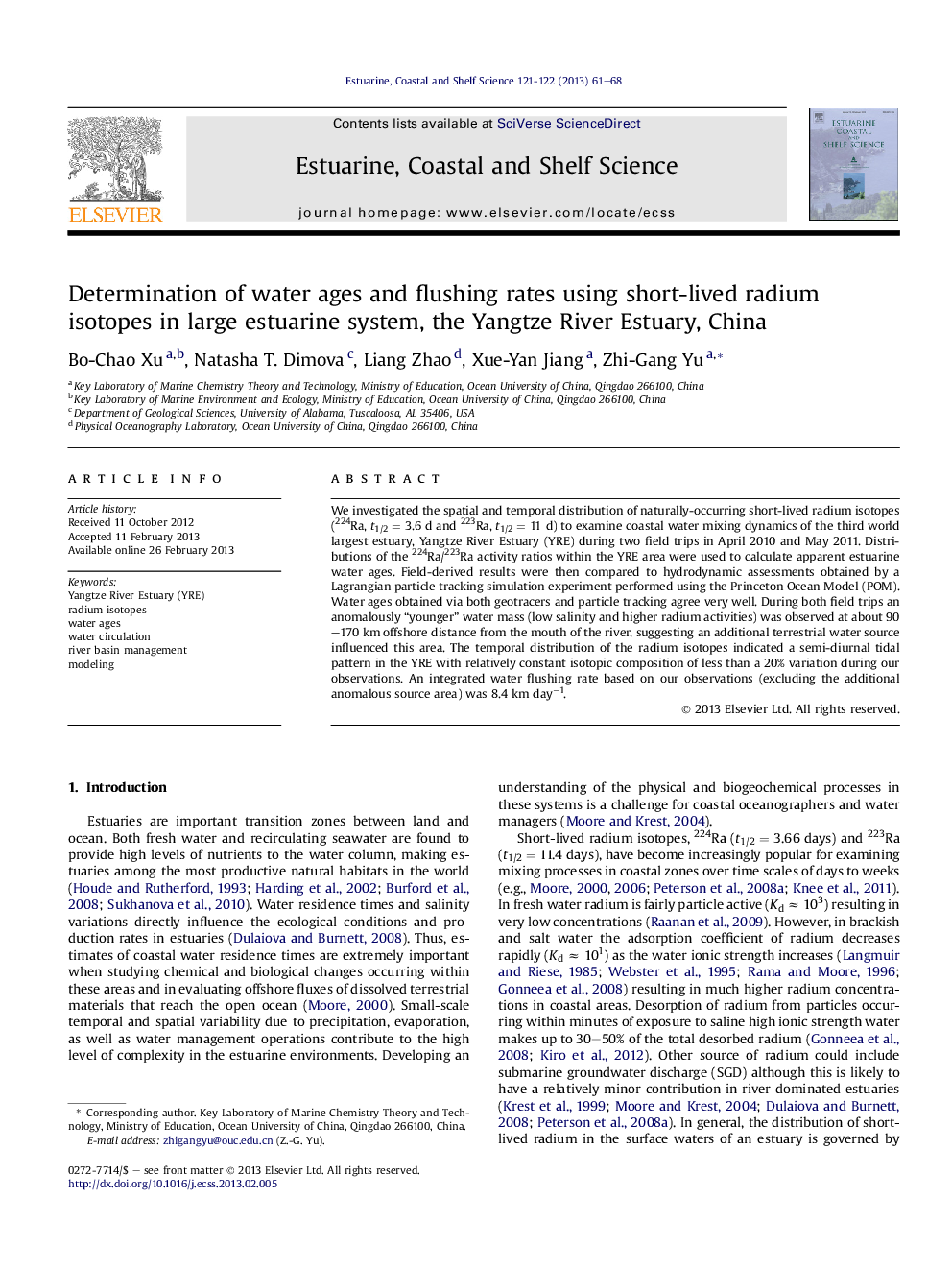| Article ID | Journal | Published Year | Pages | File Type |
|---|---|---|---|---|
| 4539945 | Estuarine, Coastal and Shelf Science | 2013 | 8 Pages |
We investigated the spatial and temporal distribution of naturally-occurring short-lived radium isotopes (224Ra, t1/2 = 3.6 d and 223Ra, t1/2 = 11 d) to examine coastal water mixing dynamics of the third world largest estuary, Yangtze River Estuary (YRE) during two field trips in April 2010 and May 2011. Distributions of the 224Ra/223Ra activity ratios within the YRE area were used to calculate apparent estuarine water ages. Field-derived results were then compared to hydrodynamic assessments obtained by a Lagrangian particle tracking simulation experiment performed using the Princeton Ocean Model (POM). Water ages obtained via both geotracers and particle tracking agree very well. During both field trips an anomalously “younger” water mass (low salinity and higher radium activities) was observed at about 90–170 km offshore distance from the mouth of the river, suggesting an additional terrestrial water source influenced this area. The temporal distribution of the radium isotopes indicated a semi-diurnal tidal pattern in the YRE with relatively constant isotopic composition of less than a 20% variation during our observations. An integrated water flushing rate based on our observations (excluding the additional anomalous source area) was 8.4 km day−1.
► We examined the distribution of 224Ra and 223Ra in the Yangtze River estuary. ► Ra approach provided a water flushing rate of about 8.4 km/day for the YRE. ► Water ages obtained via Lagrangian experiment agreed very well with Ra ages.
